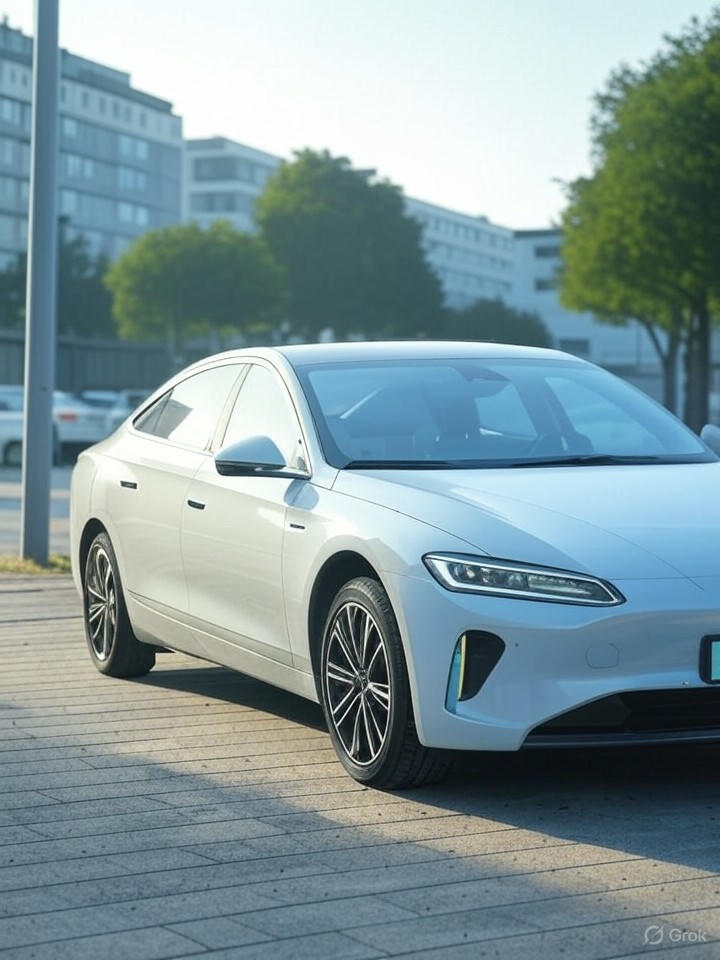In the bustling world of automotive electrification, a stark divergence is emerging: while electric vehicle (EV) sales are accelerating at breakneck speed across much of the globe, the United States finds itself mired in a slowdown, hampered by shifting policies and economic headwinds. Recent data paints a picture of robust international growth, with global EV sales surging 27% year-to-date in 2025, reaching an impressive 10.7 million units, according to reports from Electrek. This momentum is largely propelled by powerhouse markets like China and Europe, where incentives and infrastructure investments continue to fuel adoption.
Yet, in the U.S., the story is markedly different. Sales growth has decelerated to a mere crawl, with projections indicating only a modest uptick compared to the explosive expansions seen in prior years. Analysts attribute this lag to the Trump administration’s decisions to eliminate federal tax credits for EV purchases and scale back investments in a nationwide charging network, as detailed in a recent analysis by PCMag. These moves have chilled consumer enthusiasm, leaving automakers to grapple with excess inventory and recalibrated strategies.
Policy Shifts Reshaping U.S. Demand
The elimination of the $7,500 federal tax credit, a cornerstone of EV affordability since its inception, has directly impacted buyer calculations. Industry insiders note that without this incentive, many potential EV owners are opting for hybrids or sticking with traditional internal-combustion engines, especially amid rising interest rates and economic uncertainty. A quarterly report from Cox Automotive highlights that U.S. EV sales increased by just over 10% year-over-year in the first quarter of 2025, a far cry from the triple-digit growth rates of yesteryear, with General Motors driving much of the gains while Tesla experiences declines.
Compounding these challenges are supply-chain disruptions and tariff battles. China’s dominance in battery production—accounting for over 60% of global output—has led to U.S. export restrictions on critical minerals like lithium, further inflating costs for American manufacturers. Posts on X from users like BloombergNEF underscore this tension, noting that while emerging markets are “taking off” with EV adoption, the U.S. is facing a “slowdown” due to these policy-induced barriers, reflecting broader sentiment in real-time discussions.
Global Momentum Contrasts with Domestic Hurdles
Internationally, the narrative is one of triumph. China’s EV market alone has seen sales skyrocket, contributing to more than half of the global total, bolstered by aggressive subsidies and a vast charging ecosystem. Europe, meanwhile, has witnessed a 30% sales increase, driven by stringent emissions regulations and consumer shifts toward sustainable transport, as outlined in the International Energy Agency’s Global EV Outlook 2025. These regions are not only outpacing the U.S. but also innovating rapidly in battery technology and vehicle-to-grid integration.
Forecasts suggest this global upswing will persist, with Statista projecting the worldwide EV market to expand by nearly 7% annually through 2029, reaching a valuation of over $1 trillion. In contrast, U.S. projections from BloombergNEF’s Electric Vehicle Outlook indicate flat retail share at around 9% for 2025, marking the first plateau in years, as echoed in X posts from automotive analysts like Car Dealership Guy.
Industry Adaptations and Future Implications
Automakers are responding with a mix of caution and innovation. Legacy players like Ford and GM are pivoting toward hybrids to bridge the gap, while startups focus on cost-cutting measures. The rise of leasing and shared mobility services, as noted in a GlobeNewswire outlook report, offers flexible alternatives that could soften the blow of high upfront costs.
Looking ahead, the U.S. market’s trajectory hinges on potential policy reversals or breakthroughs in domestic battery production. Globally, the EV surge signals a tipping point, with one in four cars sold being electric in 2025, per BloombergNEF insights shared on X. For industry insiders, this dichotomy underscores the need for resilient strategies amid geopolitical fluxes, ensuring that electrification’s promise endures despite regional setbacks.




 WebProNews is an iEntry Publication
WebProNews is an iEntry Publication